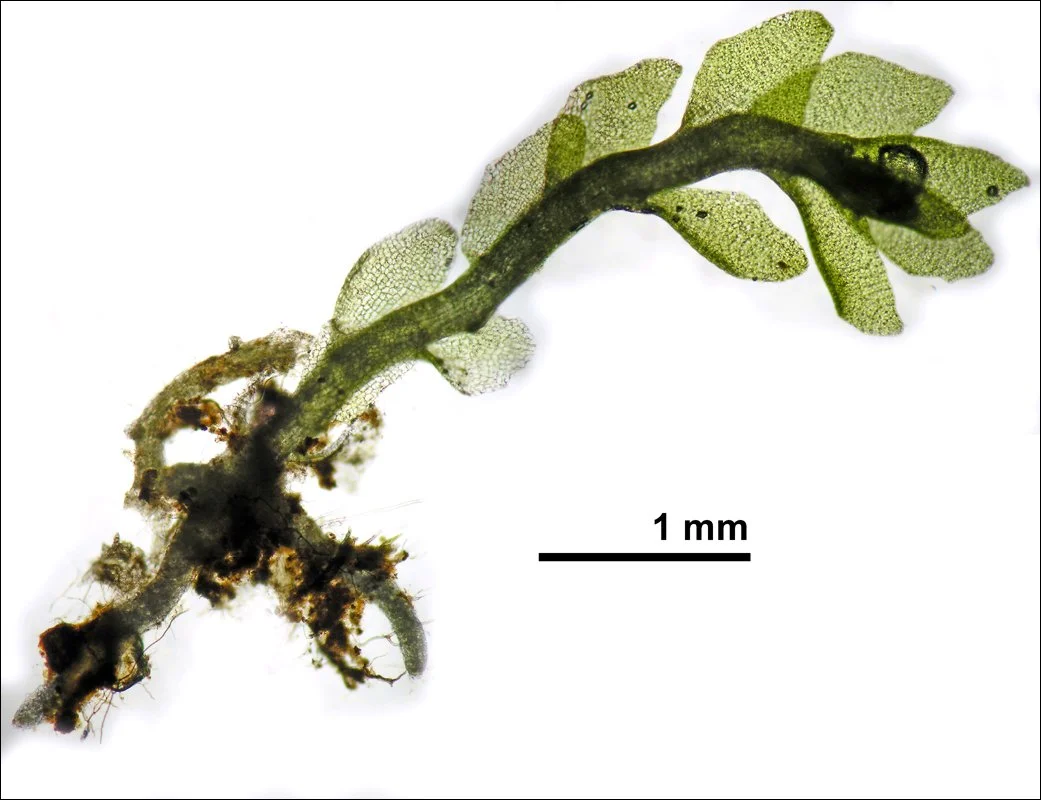Rare Liverworts
This shoot of Haplomitrium hookeri shows the simple structure of this primitive liverwort. It has leaves of varying shape, typically ovate-rhombic. They spiral up the stem without clear indication of being in three ranks. It has no rhizoids, but horizontal leafless axes that act like rhizomes or stolons. It rarely grows in patches but is found intermixed with other liverworts and mosses. This plant was found on sand terraces along Sutton Creek near the Oregon coast. This population seems to have disappeared in the past few years. Others are found in the Oregon Cascades, in the Three Sisters Wilderness.
Lophozia laxa is one of the liverworts restricted to Sphagnum. Its presence indicates a rich site for this kind of peat forming community. The color in this photograph is natural. The beauty of the picture is obtained by combining light from an incident light source with transmitted light. It is a stacked image, meaning that a series of photographs were taken at different, overlapping planes of focus and merged with stacking software.
Some of the rare liverworts in Oregon are species which are of a northern, circumboreal distribution and reach their southern limit in our state. Saddle Mountain is home to the sole station of several of these, including Barbilophozia lycopodioides. It is a beautiful plant under the microscope. This plant was collected in Washington by Elva Lawton. The dried specimen had little color, so I stained it lightly so the leaf margins stood out. A stacked image worked out well.
Ptilidium pulcherrimum has only been found in northeastern Oregon. Many circumboreal species extend further down the axis of the Rocky Mountains than the Cascade Mountains. These may turn up in the Wallowa Mountains or Blue Mountains as outliers. This is such a species. Another northern species with this kind of distribution is P. ciliare. Either of these may be turn up in northwestern Oregon as well in the northeast. These both have more finely divided, cilia margined leaves than the common endemic, P.



